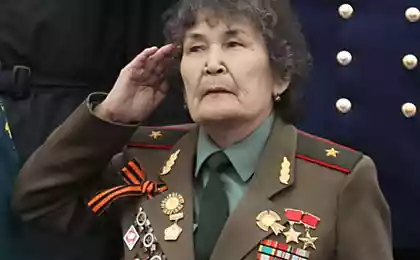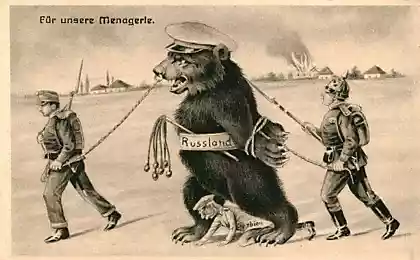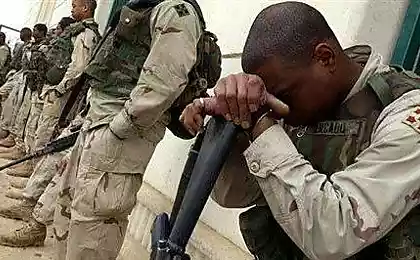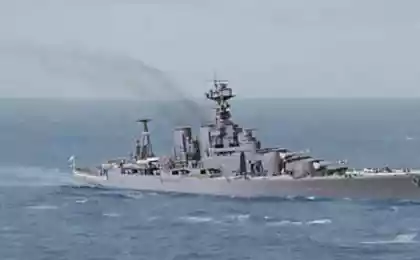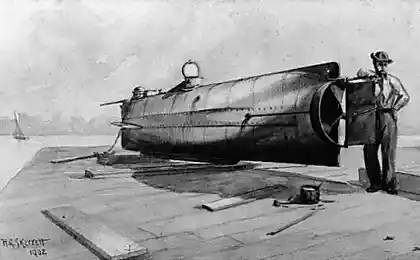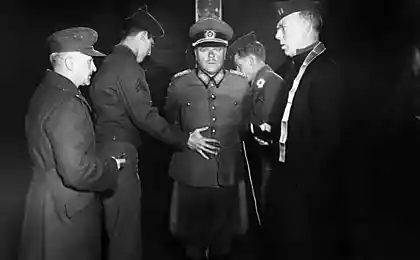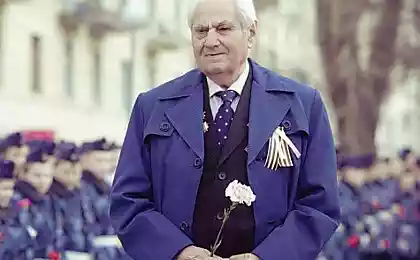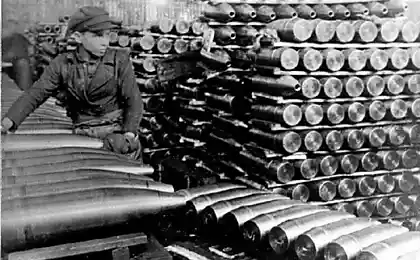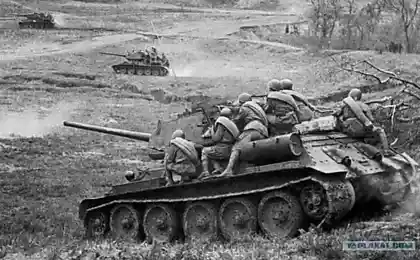783
European veterans of the Second World War: Reconciliation
15 photos + text
American photographer Jonathan Alpeyri spent a year at the shooting World War II veterans. Participants of the project are in it, including veterans of the Wehrmacht and other Nazi connections in Europe. Many of them admitted that the first time since 1945, put its military awards.
1. The Norwegian Bjorn Ostring was born September 17, 1923. In 1934, he joined the youth section of the Norwegian fascist Quisling party. When the Germans invaded, he participated in the defense of the country. Then in spring 1941 he joined the Wehrmacht. In January 1942 he was sent to near Leningrad, where he lost half of the staff in heavy battles. As a result of the Norwegian Quisling withdrew back into the country. Upon returning Ostring entered the security service Quisling. After the war, he was sentenced to 7 years in prison for treason but was released in 1949.
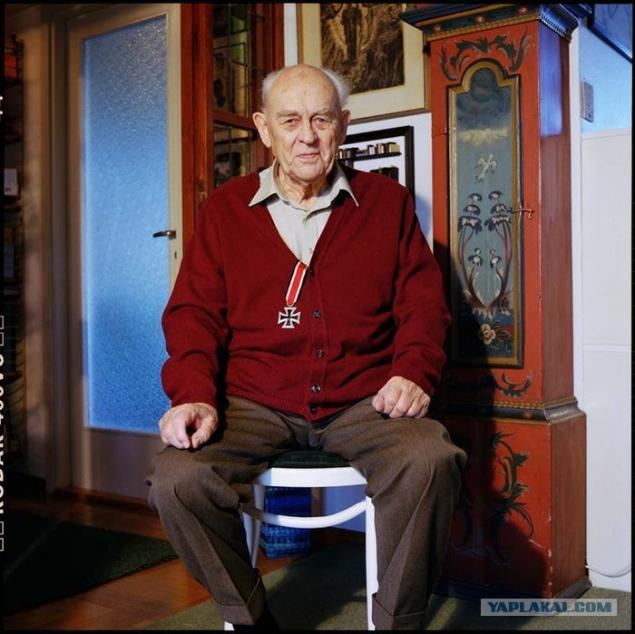
2. Carl Ulber was born in Vienna on May 28, 1923. He was drafted into the Wehrmacht in October 1941 and went on commando training. Ulber arrived on the Eastern Front in October 1942 to fight with the partisans in the Smolensk region. In March 1943, his regiment was sent to the front. He also participated in the battles in France and Italy before being captured in 1945. Ulber was released from the camp in March 1946, and returned to Vienna.
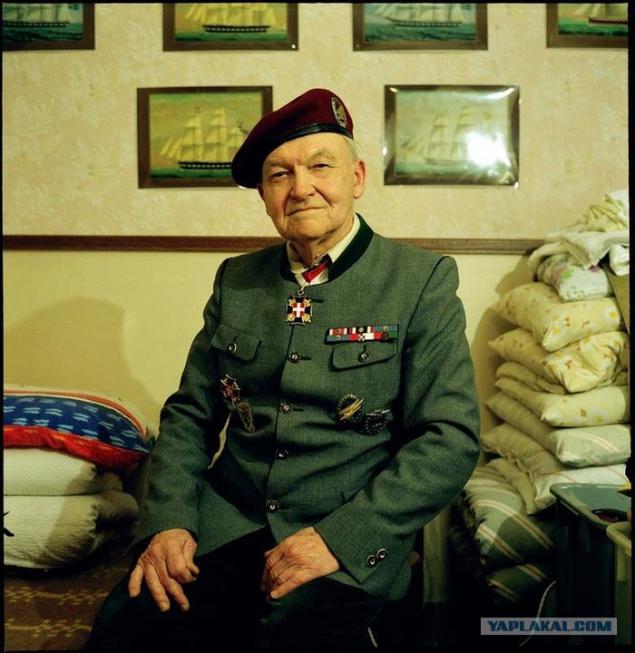
3. Mrav Hakobyan, Armenian, who fought in the Battle of Stalingrad. In the melee a German sapper shovel injured his arm, which had to be amputated.

4. Fernand Kayzergruber born in Antwerp, Belgium January 18, 1923. In his youth, he joined the Belgian fascist party Rexist. After the German invasion of Belgium in May 1940 he voluntarily went to Germany and worked at the factory in Cologne. Entry into the German army in September 1941 and went to the Russian front in June 1942, where he stayed until November of the same year. After heavy fighting on the eastern front part was assigned to Germany. Kayzergruber returned to Russia in July 1943 as part of the Waffen-SS. During the retreat in February 1944, he was wounded twice and broke his leg. Then Kayzegruber was demobilized.
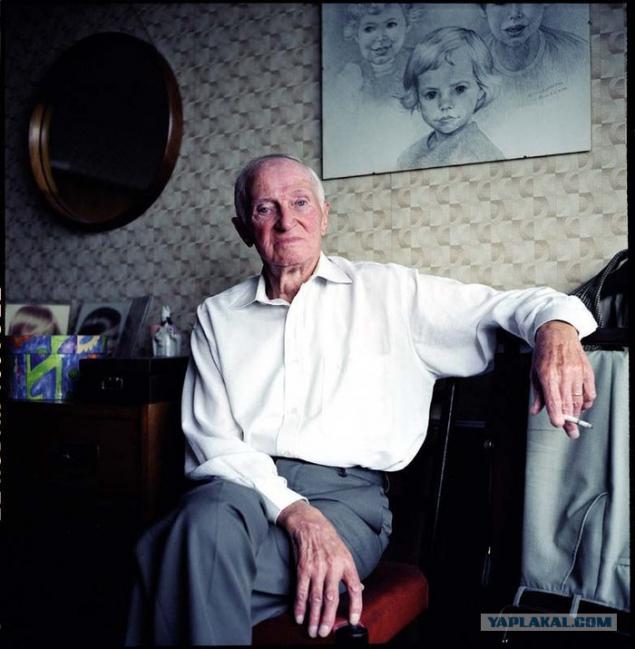
5. Daniel Bokobza born March 22, 1924 in Tunis. He was drafted into the French army in October 1943. He arrived in the UK in July 1944, and a few days later sent to Normandy. He participated in the fighting in the Vosges region, earning the Military Cross for taking part in the capture of 200 Germans. Demobilized in October 1945.
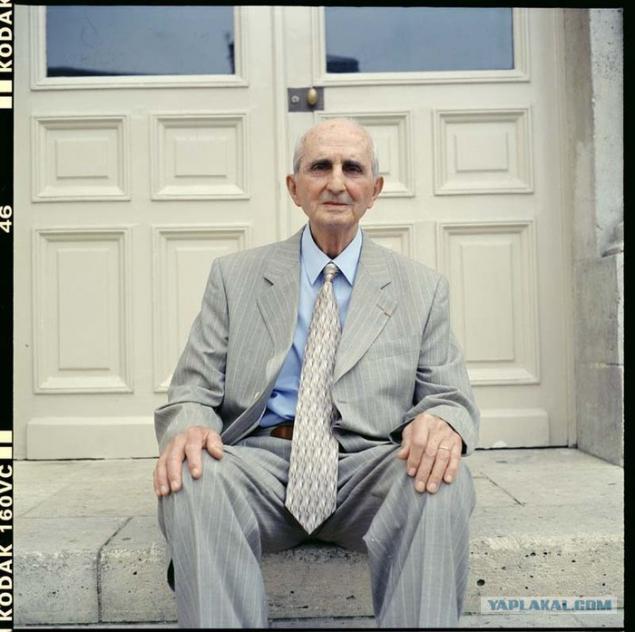
6. Israel Badger born March 1, 1919 in the city of Kremenchug Ukraine. His family moved to Moscow, where he graduated from high school, and then worked at the car factory. In the autumn of 1939 he was drafted into the Red Army, where he became a political commissar. The war came to Ukraine, and when his commander was killed by a sniper's bullet, Badger began to lead the battalion. He was wounded in September 1941 and spent four months in hospital. After the extract has been declared unfit for service, but he urged the authorities to send him back to the front. Badger was eventually transferred to the training part by Gorky, where he stayed until the end of 1942. Then he was transferred to Moscow to control the supply of armored forces. He left the Soviet Union to the United States in 1985.
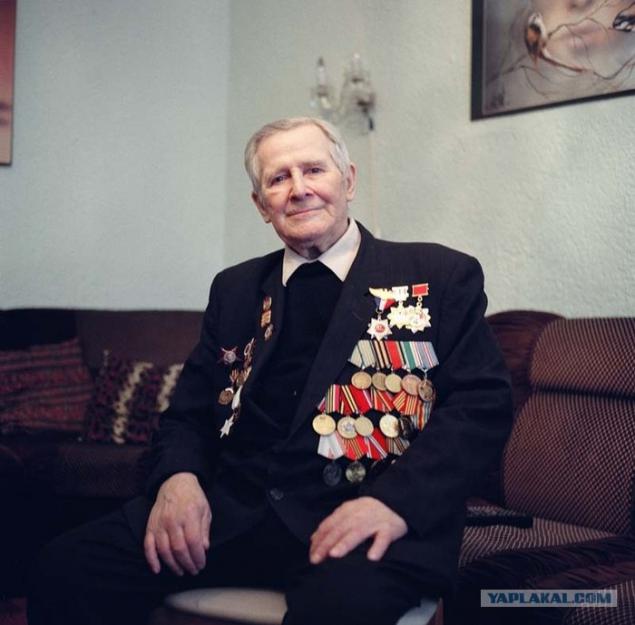
7. Giovanni Doretta born March 14, 1921 in a family of Italians living in Paris. He lived in the city until 1935, when his parents returned to Italy to work on the family farm. He was drafted into the Italian army January 21, 1941 and passed training in the elite division Alpini Cuneense. In August 1942, his unit was sent to the Russian front in the Ukraine. He participated in the battles of Stalingrad. Doretta recalls that the Italians fought in the freezing cold in a thin uniform. January 27, 1943 surrendered. The prisoners were put on a train to the Urals, and during their trip an outbreak of typhoid fever. In place of living came only 10 soldiers of 80. Then he was sent to Moscow to work in a factory. Later he became a guard German prisoners of war. He was repatriated to Italy April 1, 1946.
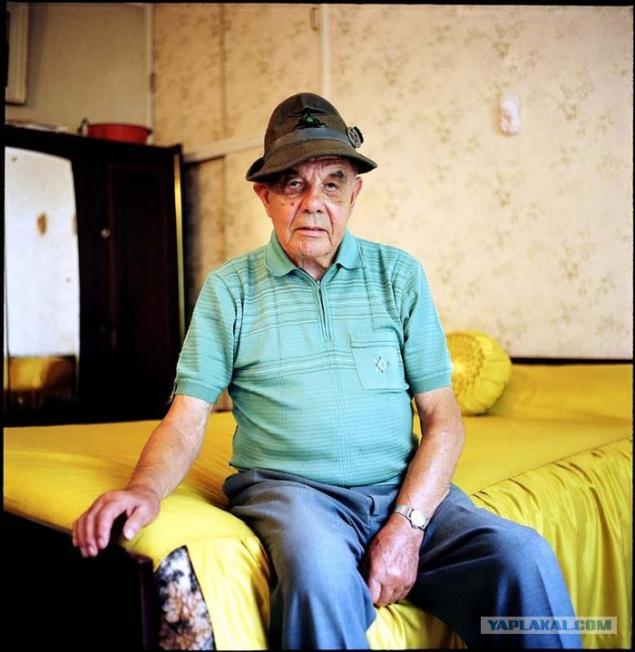
8. Lavika Blindheym born August 29, 1916 in the Norwegian town of Voss. At the time of the invasion of the German army was trained in the infantry officer. In 1941 he decided to make his way to England. To do this, he made an epic journey, first came to Stockholm, then to Moscow, Odessa, then - in Tehran, Basra and Bombay. From there, he finally arrived in Glasgow, Scotland. He was interrogated by British intelligence, and then sent to London, where he received training on the saboteur. Then, in April 1942 Blindheyn was parachuted into Norway, where he organized a resistance group and stayed in it until the end of the war.
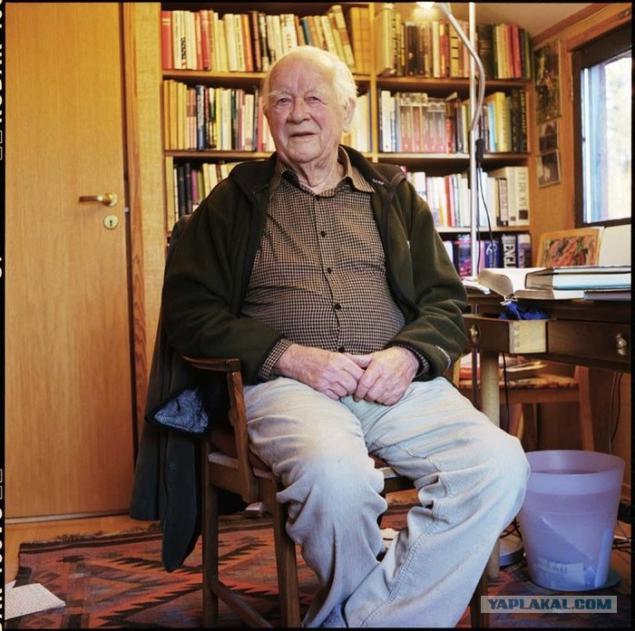
9. Eugeniusz Witt born March 6, 1922 in the town of Baranovichi in Poland. His father was an officer in the Polish army, and after the German invasion in 1939, Witt he never saw. He and his mother were taken to a labor camp in the city of Biisk in the Altai, where Witt began working as a carpenter. In 1941 he was released and joined the Polish army of Anders. Witt has been trained in Uzbekistan, and was then sent to Iran, where the Polish army was armed and reorganized the British. In March 1943, he arrived in Glasgow, Scotland. There he was trained in the radio operator, and before the end of the war Witt carried out radio communication between the British and the underground in Poland. He emigrated to the US in 1948.
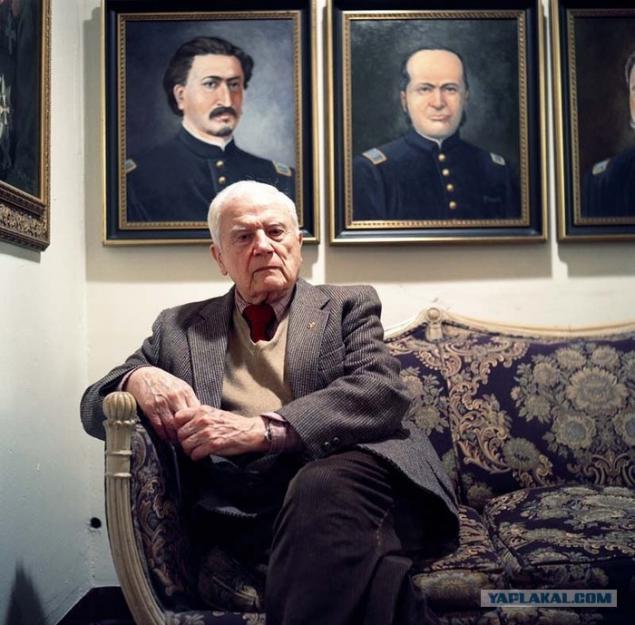
10. Adolf Straka was born in Slovenia, February 27, 1925. In 17 years, he went to work at the steel mill in Austria. He was drafted into the German army in February 1943 and sent to serve in the French Dijon. Straka stayed there for six months, and the winter of 1944 has been sent to the Eastern Front in the region of Vitebsk. After a month of heavy fighting, he was captured by the Russian. In the Soviet Union joined the prisoners formed from part of the Yugoslavs, which included fighting against the Germans until the end of the war.
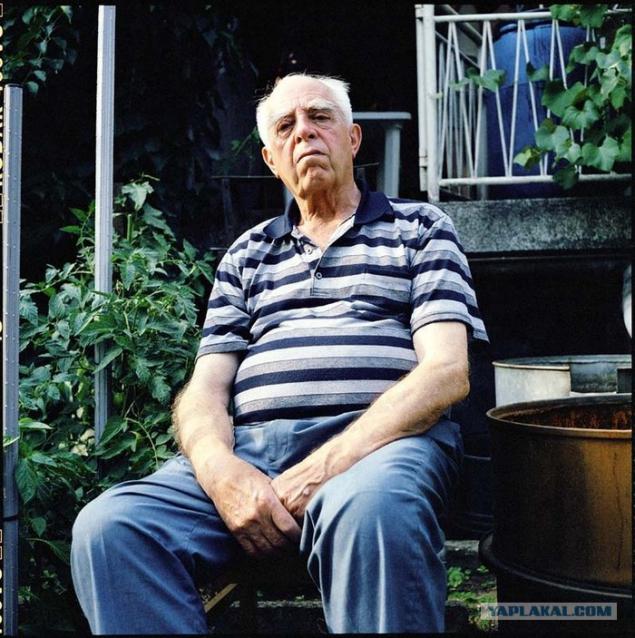
11. Ernst Gottsheteyn born July 3, 1922 in the city of Shraybendorf Sudetenland (now part of the Czech Republic). In the fall of 1941, he went as a volunteer in the Wehrmacht. He fought on the Eastern Front, in December 1941, was wounded near Moscow. In cure Gottshteyna sent to Vienna. Then he got on the African front. Again he was wounded - this time in Tunisia. Evacuated to Berlin, then to Denmark. He fought in northern France.

12. Drossler Herbert was born November 24, 1925 in Thuringia, Germany. He was drafted into the German army in the 21st Panzer Division Rommel. Drossler was in France and participated in the defense of Normandy from the Anglo-American troops. In August 1944, the Americans took him prisoner. Initially, he was in a POW camp in the town of Audrieux, but was then transferred to a job on a farm near Caen. He worked there for another 5 years until the liberation. Drossler did not return to Germany as his home town was part of the GDR. In 1961, he received French citizenship and continued to live in this country.

13. Milivoj Borosh was born in Zagreb, Croatia September 11, 1920. He was trained as a pilot in the Yugoslav flight school. After the defeat of Yugoslavia, he was drafted into the German Luftwaffe. On the eastern front, he got in December 1941. In June 1942, he and his two Russian companions for the Luftwaffe bomber was put in the rear of the Red Army. He was taken prisoner, and even spent a few days in the Lubyanka prison. In December 1943, Borosh was sent to serve in the USSR formed the Yugoslav connection. By the end of the war he fought on the Soviet bomber. He returned to Yugoslavia in April 1946.
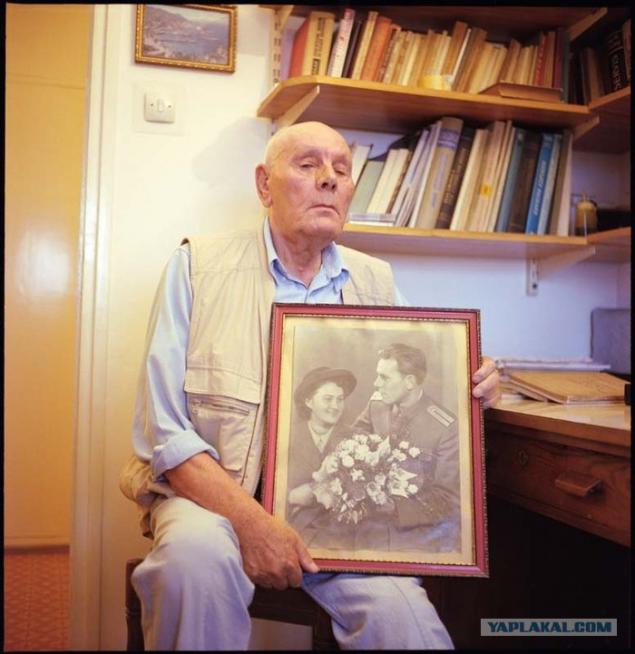
14. Thomas Giles. Born on December 5, 1920 in Edinburgh, Scotland. He volunteered in engineering units, became sapper. After a brief stay in Egypt was sent to Benghazi, Libya. When Rommel's troops attacked his regiment, they were forced to retreat, but even before Giles and other blasters left at the booby traps. The building subsequently exploded, buried under the rubble of many German officers. Giles survived seven months of the siege of Tobruk. Then he was sent to Burma. Giles managed to make war in Europe - in 1945 in Belgium and the Netherlands.
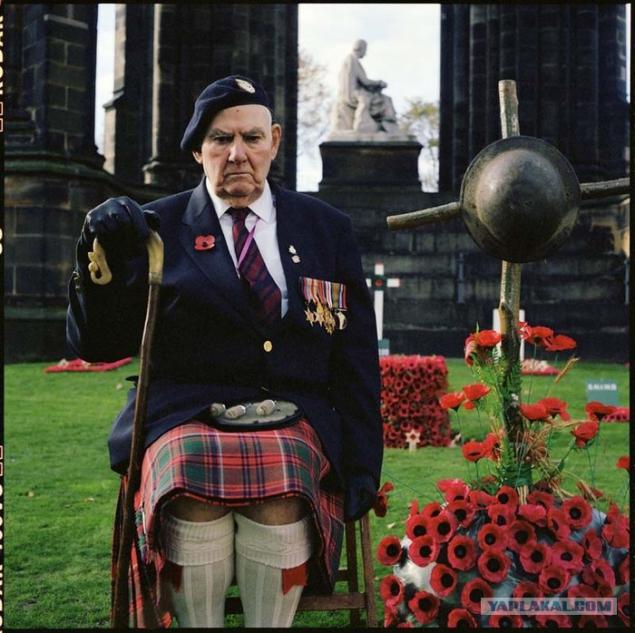
15. Jean Mathieu was born August 7, 1923 in the French Alsace. When the Germans occupied the area, he was sent to a labor camp in northern Bavaria. In January 1943 he was drafted into the German infantry divisions, but Mathieu deliberately spilled the boiling milk on foot. This enabled him to get a reprieve for 6 months. Then he went to serve in the German navy as a member of the crew of torpedo boats in June 1944 was transferred to the Coast Guard. After the Allied invasion of Normandy he had planned to transfer to the Eastern front, but Mathieu deserted and hid in the French town of Lapoutroie until December 1944, then he joined the Free French forces.
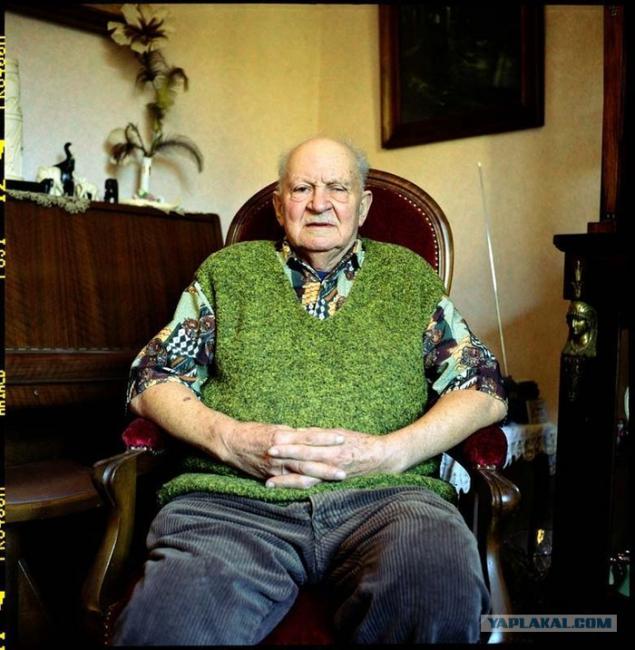
Source:
American photographer Jonathan Alpeyri spent a year at the shooting World War II veterans. Participants of the project are in it, including veterans of the Wehrmacht and other Nazi connections in Europe. Many of them admitted that the first time since 1945, put its military awards.
1. The Norwegian Bjorn Ostring was born September 17, 1923. In 1934, he joined the youth section of the Norwegian fascist Quisling party. When the Germans invaded, he participated in the defense of the country. Then in spring 1941 he joined the Wehrmacht. In January 1942 he was sent to near Leningrad, where he lost half of the staff in heavy battles. As a result of the Norwegian Quisling withdrew back into the country. Upon returning Ostring entered the security service Quisling. After the war, he was sentenced to 7 years in prison for treason but was released in 1949.

2. Carl Ulber was born in Vienna on May 28, 1923. He was drafted into the Wehrmacht in October 1941 and went on commando training. Ulber arrived on the Eastern Front in October 1942 to fight with the partisans in the Smolensk region. In March 1943, his regiment was sent to the front. He also participated in the battles in France and Italy before being captured in 1945. Ulber was released from the camp in March 1946, and returned to Vienna.

3. Mrav Hakobyan, Armenian, who fought in the Battle of Stalingrad. In the melee a German sapper shovel injured his arm, which had to be amputated.

4. Fernand Kayzergruber born in Antwerp, Belgium January 18, 1923. In his youth, he joined the Belgian fascist party Rexist. After the German invasion of Belgium in May 1940 he voluntarily went to Germany and worked at the factory in Cologne. Entry into the German army in September 1941 and went to the Russian front in June 1942, where he stayed until November of the same year. After heavy fighting on the eastern front part was assigned to Germany. Kayzergruber returned to Russia in July 1943 as part of the Waffen-SS. During the retreat in February 1944, he was wounded twice and broke his leg. Then Kayzegruber was demobilized.

5. Daniel Bokobza born March 22, 1924 in Tunis. He was drafted into the French army in October 1943. He arrived in the UK in July 1944, and a few days later sent to Normandy. He participated in the fighting in the Vosges region, earning the Military Cross for taking part in the capture of 200 Germans. Demobilized in October 1945.

6. Israel Badger born March 1, 1919 in the city of Kremenchug Ukraine. His family moved to Moscow, where he graduated from high school, and then worked at the car factory. In the autumn of 1939 he was drafted into the Red Army, where he became a political commissar. The war came to Ukraine, and when his commander was killed by a sniper's bullet, Badger began to lead the battalion. He was wounded in September 1941 and spent four months in hospital. After the extract has been declared unfit for service, but he urged the authorities to send him back to the front. Badger was eventually transferred to the training part by Gorky, where he stayed until the end of 1942. Then he was transferred to Moscow to control the supply of armored forces. He left the Soviet Union to the United States in 1985.

7. Giovanni Doretta born March 14, 1921 in a family of Italians living in Paris. He lived in the city until 1935, when his parents returned to Italy to work on the family farm. He was drafted into the Italian army January 21, 1941 and passed training in the elite division Alpini Cuneense. In August 1942, his unit was sent to the Russian front in the Ukraine. He participated in the battles of Stalingrad. Doretta recalls that the Italians fought in the freezing cold in a thin uniform. January 27, 1943 surrendered. The prisoners were put on a train to the Urals, and during their trip an outbreak of typhoid fever. In place of living came only 10 soldiers of 80. Then he was sent to Moscow to work in a factory. Later he became a guard German prisoners of war. He was repatriated to Italy April 1, 1946.

8. Lavika Blindheym born August 29, 1916 in the Norwegian town of Voss. At the time of the invasion of the German army was trained in the infantry officer. In 1941 he decided to make his way to England. To do this, he made an epic journey, first came to Stockholm, then to Moscow, Odessa, then - in Tehran, Basra and Bombay. From there, he finally arrived in Glasgow, Scotland. He was interrogated by British intelligence, and then sent to London, where he received training on the saboteur. Then, in April 1942 Blindheyn was parachuted into Norway, where he organized a resistance group and stayed in it until the end of the war.

9. Eugeniusz Witt born March 6, 1922 in the town of Baranovichi in Poland. His father was an officer in the Polish army, and after the German invasion in 1939, Witt he never saw. He and his mother were taken to a labor camp in the city of Biisk in the Altai, where Witt began working as a carpenter. In 1941 he was released and joined the Polish army of Anders. Witt has been trained in Uzbekistan, and was then sent to Iran, where the Polish army was armed and reorganized the British. In March 1943, he arrived in Glasgow, Scotland. There he was trained in the radio operator, and before the end of the war Witt carried out radio communication between the British and the underground in Poland. He emigrated to the US in 1948.

10. Adolf Straka was born in Slovenia, February 27, 1925. In 17 years, he went to work at the steel mill in Austria. He was drafted into the German army in February 1943 and sent to serve in the French Dijon. Straka stayed there for six months, and the winter of 1944 has been sent to the Eastern Front in the region of Vitebsk. After a month of heavy fighting, he was captured by the Russian. In the Soviet Union joined the prisoners formed from part of the Yugoslavs, which included fighting against the Germans until the end of the war.

11. Ernst Gottsheteyn born July 3, 1922 in the city of Shraybendorf Sudetenland (now part of the Czech Republic). In the fall of 1941, he went as a volunteer in the Wehrmacht. He fought on the Eastern Front, in December 1941, was wounded near Moscow. In cure Gottshteyna sent to Vienna. Then he got on the African front. Again he was wounded - this time in Tunisia. Evacuated to Berlin, then to Denmark. He fought in northern France.

12. Drossler Herbert was born November 24, 1925 in Thuringia, Germany. He was drafted into the German army in the 21st Panzer Division Rommel. Drossler was in France and participated in the defense of Normandy from the Anglo-American troops. In August 1944, the Americans took him prisoner. Initially, he was in a POW camp in the town of Audrieux, but was then transferred to a job on a farm near Caen. He worked there for another 5 years until the liberation. Drossler did not return to Germany as his home town was part of the GDR. In 1961, he received French citizenship and continued to live in this country.

13. Milivoj Borosh was born in Zagreb, Croatia September 11, 1920. He was trained as a pilot in the Yugoslav flight school. After the defeat of Yugoslavia, he was drafted into the German Luftwaffe. On the eastern front, he got in December 1941. In June 1942, he and his two Russian companions for the Luftwaffe bomber was put in the rear of the Red Army. He was taken prisoner, and even spent a few days in the Lubyanka prison. In December 1943, Borosh was sent to serve in the USSR formed the Yugoslav connection. By the end of the war he fought on the Soviet bomber. He returned to Yugoslavia in April 1946.

14. Thomas Giles. Born on December 5, 1920 in Edinburgh, Scotland. He volunteered in engineering units, became sapper. After a brief stay in Egypt was sent to Benghazi, Libya. When Rommel's troops attacked his regiment, they were forced to retreat, but even before Giles and other blasters left at the booby traps. The building subsequently exploded, buried under the rubble of many German officers. Giles survived seven months of the siege of Tobruk. Then he was sent to Burma. Giles managed to make war in Europe - in 1945 in Belgium and the Netherlands.

15. Jean Mathieu was born August 7, 1923 in the French Alsace. When the Germans occupied the area, he was sent to a labor camp in northern Bavaria. In January 1943 he was drafted into the German infantry divisions, but Mathieu deliberately spilled the boiling milk on foot. This enabled him to get a reprieve for 6 months. Then he went to serve in the German navy as a member of the crew of torpedo boats in June 1944 was transferred to the Coast Guard. After the Allied invasion of Normandy he had planned to transfer to the Eastern front, but Mathieu deserted and hid in the French town of Lapoutroie until December 1944, then he joined the Free French forces.

Source:

